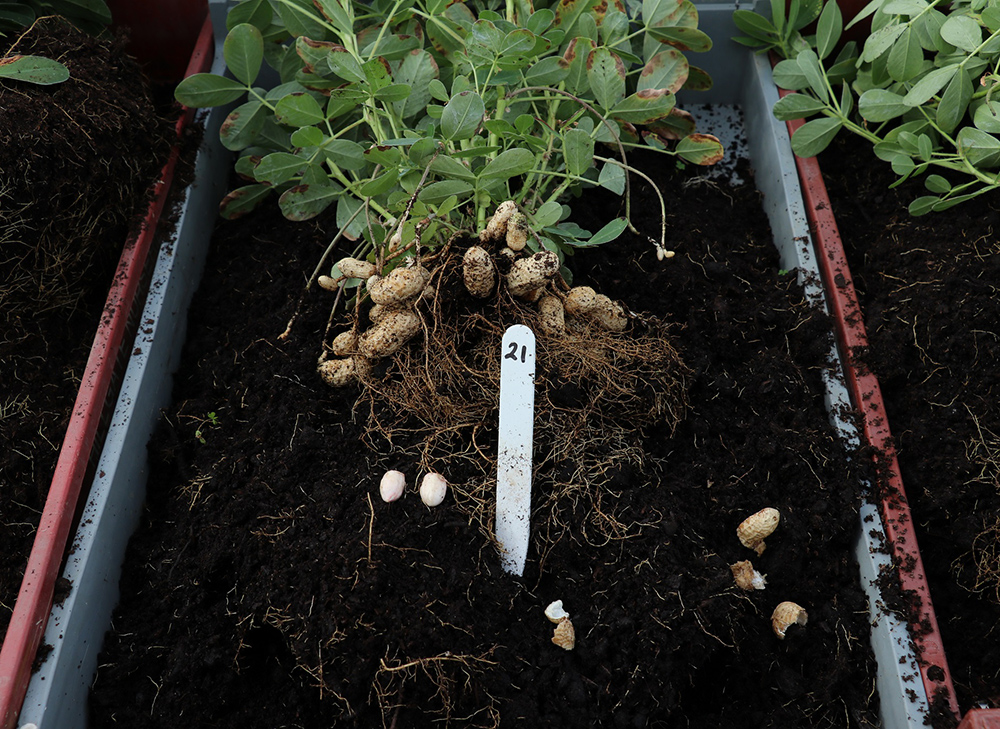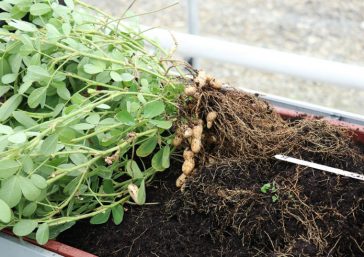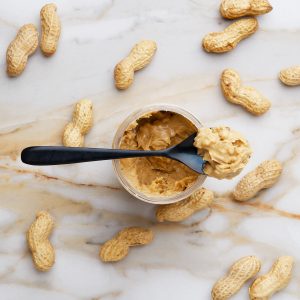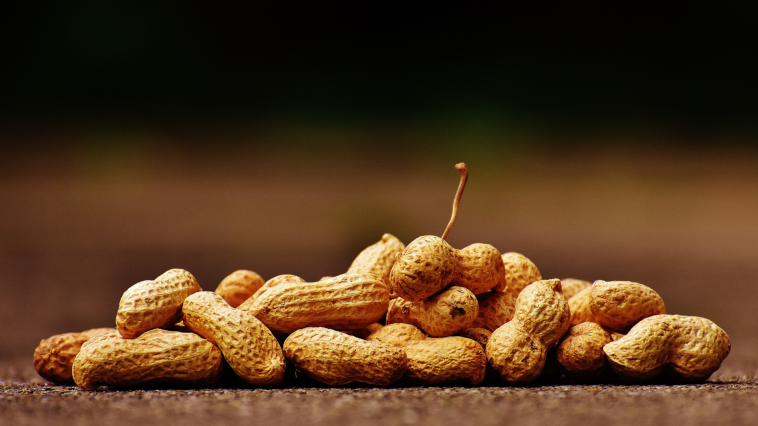Nuts and legumes are very good alternative sources of protein that can be utilised in areas where meat is not readily available or too expensive to buy. Cultivating and supplying peanuts, also known as groundnuts, to the local market can be a lucrative business if it is managed correctly. Botanically, peanuts are classified as legumes; however, for culinary and nutritional purposes, peanuts are considered a nut.
Scientific name: Arachis Hypogaea L.
Other names: groundnuts, peanuts, matokomane, isivuno, esincono, dzinduhu, samatongomani
Background
The cultivated peanut or groundnut (Arachis hypogaea L.), originated in South America (Bolivia and adjoining countries) and is now grown throughout the tropical and warm temperate regions of the world. This crop was grown widely by native peoples of the New World at the time of European expansion in the sixteenth century and was subsequently taken to Europe, Africa, Asia, and the Pacific Islands. Groundnut production was introduced to the present South Eastern United States during colonial times. Peanut was grown primarily as a garden crop in the United States until 1870.
Agronomic requirements
Soil requirements
Groundnuts grow best in yellow-red and red, well-drained, fertile sandy to sandy loams with a pH range of 5,5 to 7,0. Saline soils are not suitable because the crop has a very low salt tolerance. Soils with more than 20% clay and stones will result in poor yield and make harvesting difficult. Shallow and compacted soils are not preferred, as the taproots of groundnuts can penetrate the soil to a depth of up to 2 m. The most suitable soil forms are Avalon, Bainsvlei, Clovelly, Hutton, Pinedene and Glencoe.

Climatic requirements
It requires a high temperature and a frost-free period of about 160 days. Groundnuts will not reach optimum maturity for a marketable yield to justify commercial production in areas with fewer heat units during the growing season.
Groundnuts germinate 95% at soil temperatures ranging from 18 to 30°C. The suitable vegetative growth temperature ranges from 20 to 35°C. However, at 33°C this declines to 84%. The temperature favourable for flowering and pod formation is about 28°C.
Rainfall
Rainfall of about 500 to 700 mm per annum will be satisfactory for good yields of groundnuts. Wider rows are advisable in low-rainfall areas while narrow rows are suitable in higher rainfall areas. Row spacing therefore varies from as close as 65 cm to the wider 90 cm between the rows.
Cultivars
There are few registered cultivars for groundnuts in Southern African countries; however, research on cultivar improvements is underway. Always try to plant more than one cultivar to ensure a better harvest. Never put all your trust in only one cultivar.
For a detailed list of registered cultivars, farmers are advised to consult the local extension officers and local seed suppliers’ agronomists.
Cultivation practices
Soil preparation
Seedbeds should be prepared, either on a flat or widely ridged field. Primary soil cultivation is necessary on virgin soils or any other soil type to remove debris and break the plough layer. A uniform seedbed with sufficient planting depth and spacing, excellent germination, weed control and good moisture retention is imperative for good yields. All plant residue should be well incorporated into the soil to prevent disease pressure build-up.
Fertilisation
Substantial evidence exists to show that groundnuts respond to additional fertiliser applications, even though this is not imperative in rural situations. Groundnuts are adapted to a soil with a pH (H20) of 5,3 to 7, and if the pH is out of this range, certain elements become unavailable, such as iron and zinc. Being a leguminous crop, groundnuts can fix atmospheric nitrogen (N) with the aid of root bacteria. For this reason, this crop is not dependent on nitrogen fertilisation. On the other hand, it is very important to apply calcium in the form of gypsum at a rate of 400 to 700 kg/ha as this improves the quality of the crop and helps with resistance to diseases.
Planting
The planting date for groundnuts in Southern Africa is mid-October to end-November. Planting should occur during favourable soil and weather conditions. A planting depth of 5 to 7 cm is preferred for better germination when soil temperature is at 18˚C or above. The preferred population density is 150 000 plants per hectare on dryland and 300 000 plants per hectare on irrigation. The ideal row width for Spanish runner type groundnuts under rainfed conditions should be 90 to 100 cm spacing between rows and under irrigation from 30 to 45 cm. A hand rule to ensure the right plant population is 50 to 80 kg/ha seed under dryland conditions and 80 to 120 kg/ha under irrigation conditions.
Irrigation
Most of the cultivated groundnuts in Southern Africa are under dryland conditions. Irrigation can be applied in areas with limited soil moisture/low rainfall areas to maximise production and quality. The irrigation method will depend on the available water resources and the available irrigation equipment.

Weed control
Groundnuts are susceptible to a wide range of weeds, which are in huge competition with groundnuts for available soil moisture, soil nutrients, light, space or serve as hosts for diseases. Weeds can result in a low yield, poor quality of the groundnut seeds, difficult earthing up and difficulty in harvesting. As such, an integrated system, ranging from chemical, mechanical to biological, should be used in order to effect weed suppression. Effective weed control implies good eradication of weeds throughout the growing season. A good crop rotation system will also combat weeds and the appearance of diseases in groundnuts.
Pest disease control
Diseases in groundnuts can be classified as leaf, stem, and pod diseases. In addition to these, particularly viral diseases are encountered. Insect pests such as termites could also plague the groundnut farmer. All these diseases and pests can be identified by using the publication “Groundnut diseases and pests” of the ARC-Grain Crops Institute. For information on chemical control “A guide to the use of pesticides and fungicides in the Republic of South Africa” published by the national Department of Agriculture, Forestry and Fisheries should be consulted.
Harvesting maturity and method
The number of days to maturity varies with cultivars. There are some characteristics that need close attention and observation to determine harvest maturity, namely:
- Pod colour – inner walls display a dark-brown colour as a result of darkening of the inner tissue of the hull.
- Seed colour – young, immature seed is white and changes to pink and dull pink as the seed matures.
For harvesting, a digger-shaker-windrower is used to lift groundnuts and detach them from the soil. Dig deep enough to prevent cutting pegs. Windrow-inverting attachments orient plants as they leave the shaker so that pods are primarily on the top of windrows to permit better air circulation and exposure to sunlight for a shorter drying time.
Importance and uses
Human uses: Seeds yield a non-drying, edible oil used in cooking, margarines, salads, canning, for deep-frying, for shortening in pastry and bread. Seeds are eaten raw, whole roasted and salted, or chopped in confectioneries, or ground into peanut butter. Young pods may be consumed as a vegetable. Young leaves and tips are suitable as a cooked, green vegetable. Other products include ice cream, massage oil and peanut milk.

Industrial uses: Groundnut oil is also used for pharmaceuticals, soaps, cold creams, cosmetics, dyes, paints, pomades and lubricants, emulsions for insect control and fuel for diesel engines. The hulls are used for furfural, fuel and as filler for fertilisers.
Livestock uses: Oilcake serves as a high-protein livestock feed. Foliage provides silage and forage. Groundnut hulls are also used as livestock feed. The vines with the leaves are excellent high-protein hay for horses and ruminant livestock.
The information provided in this article is credited to the South African Department of Agriculture, Forestry and Fisheries. For more information visit their website on www.daff.gov.za or contact them on +27(0)12-319-6072 or send an e-mail to DPP@nda.agric.za.









